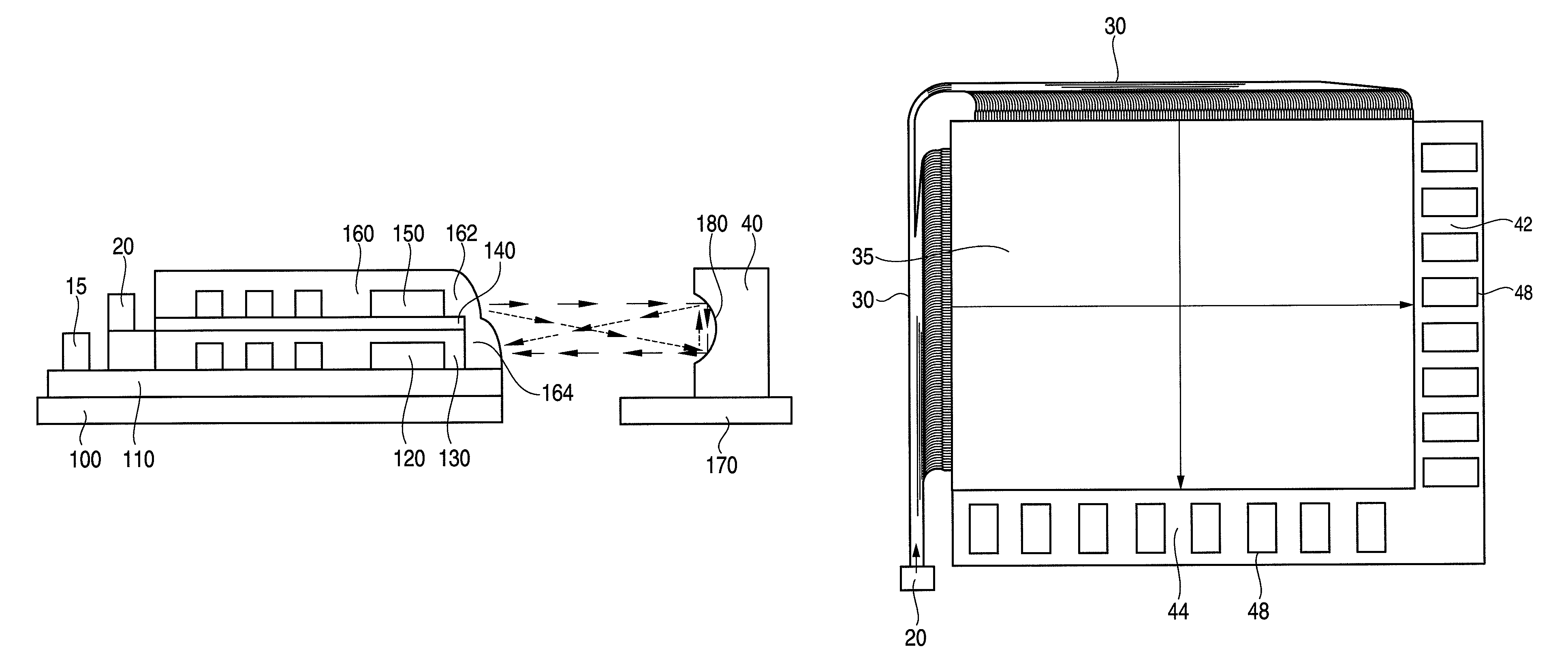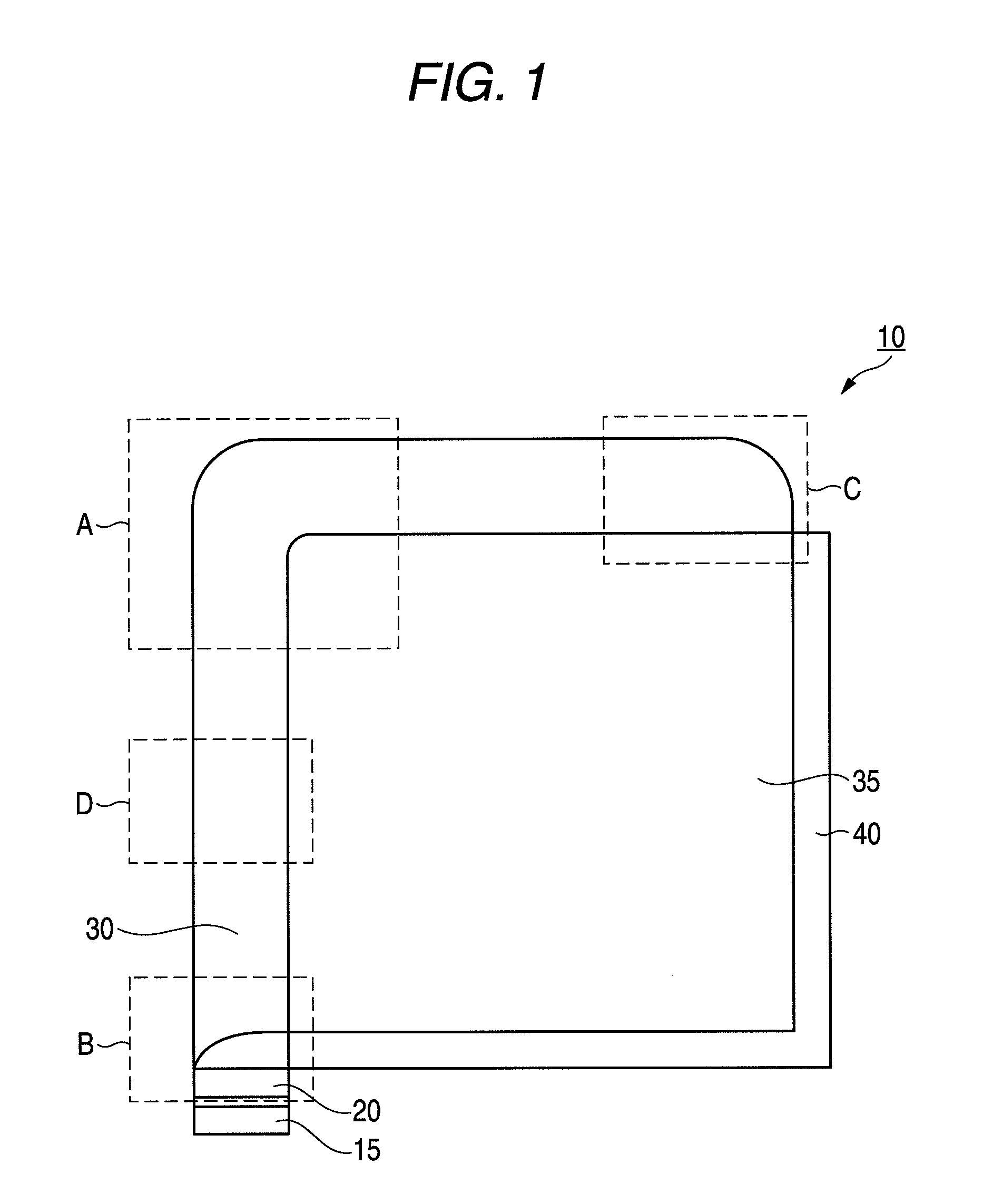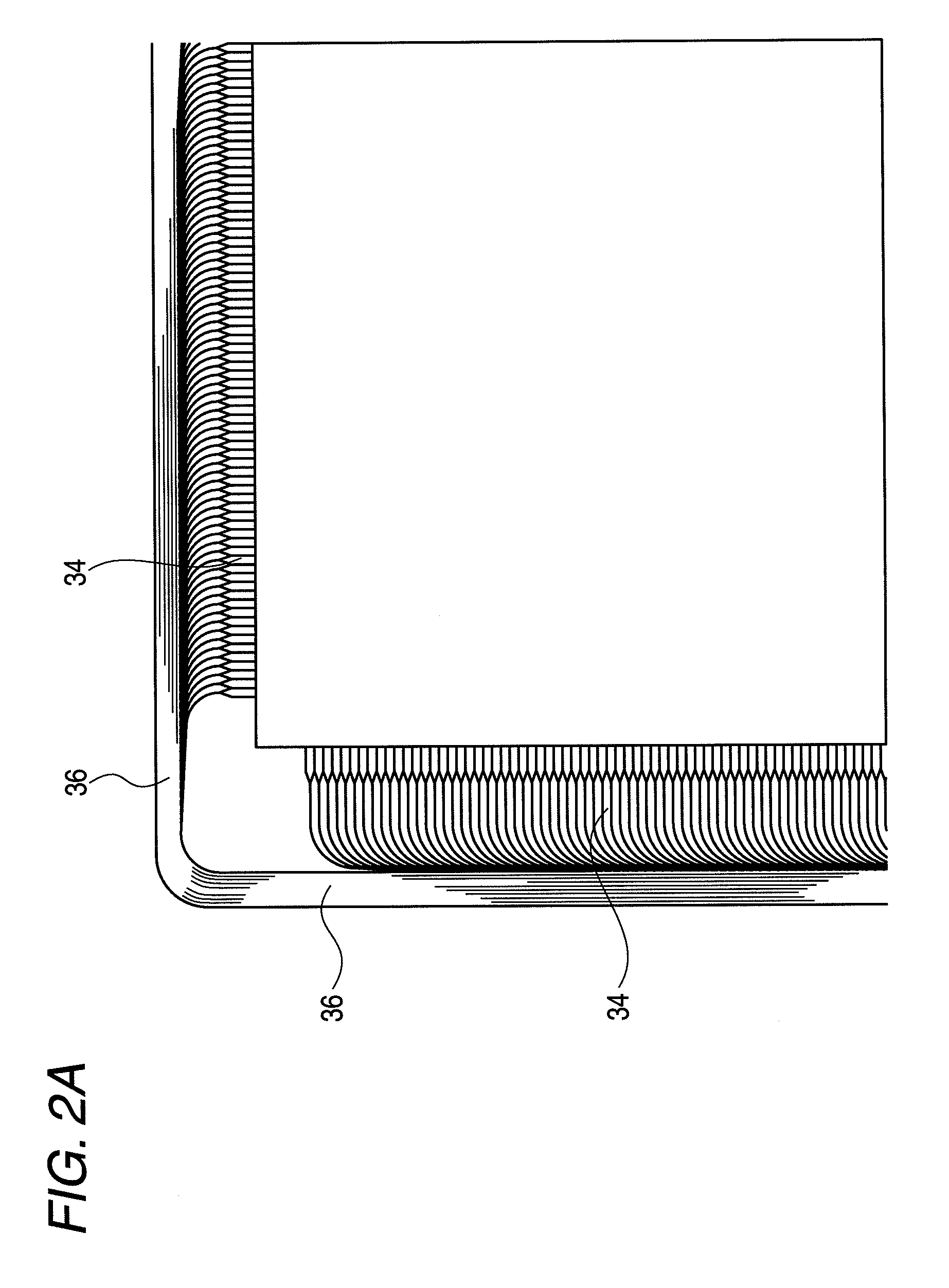Apparatus using waveguide, optical touch panel, and method of fabricating waveguide
a technology of optical touch panel and apparatus, applied in the direction of instruments, cladded optical fibre, optical elements, etc., can solve the problems of affecting the color purity of the screen, affecting the use of input methods such as keyboards, keypads and mouses, and devices becoming smaller
- Summary
- Abstract
- Description
- Claims
- Application Information
AI Technical Summary
Benefits of technology
Problems solved by technology
Method used
Image
Examples
Embodiment Construction
[0027]Exemplary embodiments of the present invention will now be discussed with reference to the accompanying drawings. In the following description, like reference numerals refer to like elements throughout.
[0028]Turning now to FIG. 1, a top view of an apparatus is shown. The apparatus 10 comprises a waveguide 30, a reflector 40, a light source 20, and a light detector 15. The light source 20 is optically coupled to one end of the waveguide 30, which extends along two perpendicular sides of a detection space 35. In other words, the waveguide 30 in this exemplary embodiment extends in an “L-shape” around two perpendicular sides of the detection space 35. The reflector 40 extends along two perpendicular sides of the detection space 35 which are located opposite to the sides along which the waveguide 30 is positioned. The reflector 40 may be formed as one integral piece which extends along both of the perpendicular sides of the detection space, or the reflector 40 may be formed as two...
PUM
 Login to View More
Login to View More Abstract
Description
Claims
Application Information
 Login to View More
Login to View More - R&D
- Intellectual Property
- Life Sciences
- Materials
- Tech Scout
- Unparalleled Data Quality
- Higher Quality Content
- 60% Fewer Hallucinations
Browse by: Latest US Patents, China's latest patents, Technical Efficacy Thesaurus, Application Domain, Technology Topic, Popular Technical Reports.
© 2025 PatSnap. All rights reserved.Legal|Privacy policy|Modern Slavery Act Transparency Statement|Sitemap|About US| Contact US: help@patsnap.com



